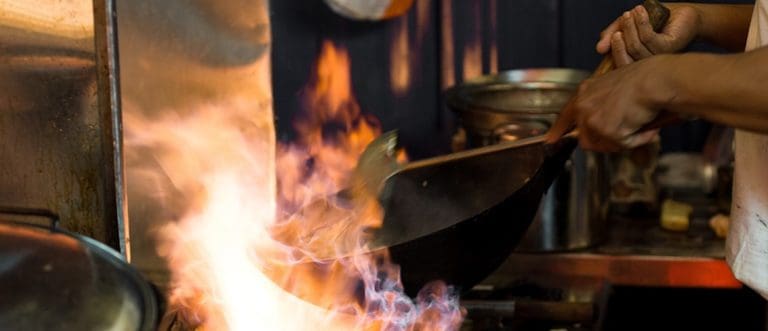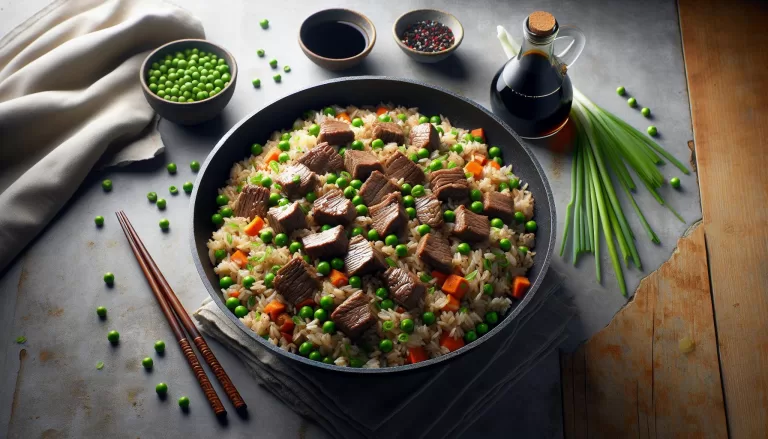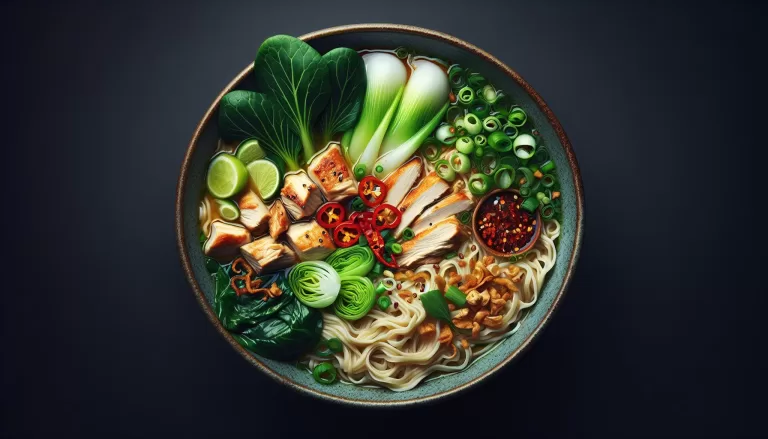Customizing Your Delicious Homemade Hunan Beef Recipe: A Guide to Masterful Cooking
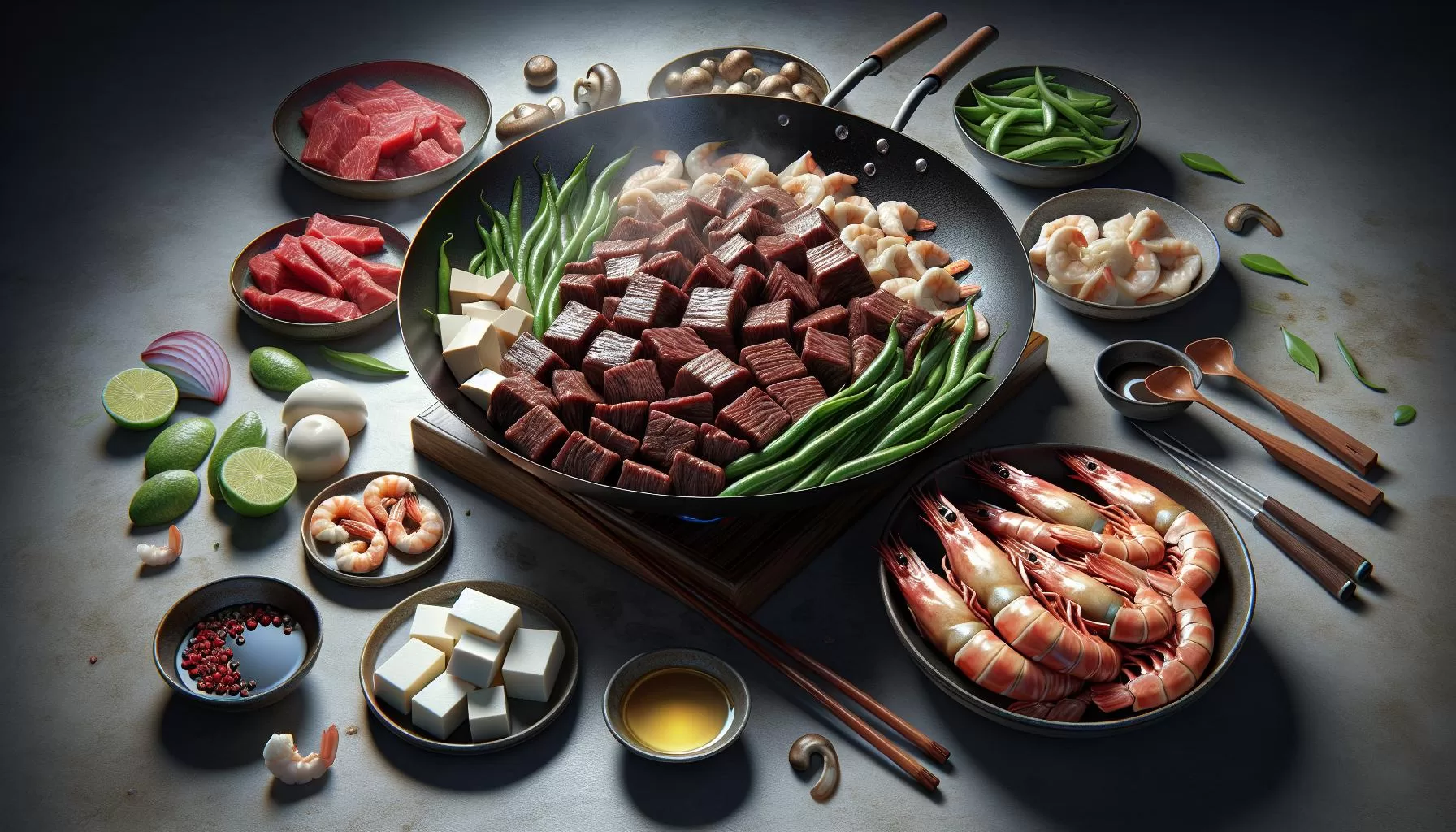
Ingredients for Homemade Hunan Beef
Gearing up to cook Hunan beef at home? You’re just a few simple ingredients away from creating a robust, flavor-packed dish. Here’s what you’re going to need:
- Flank Steak, thinly sliced: 1 pound
- Soy Sauce: 1/4 cup
- Brown Sugar: 2 tablespoons
- Cornstarch: 1 tablespoon
- Red Chili Peppers, dried: 6 to 8
- Ginger Root, grated: 2 inches
- Garlic, minced: 3 cloves
- Vegetable Oil: 2 tablespoons
Apart from these traditional elements, there are a few optional ingredients that can lift up your beef dish:
- Chinese Black Vinegar: 1 tablespoon
- Shaoxing Wine, or Dry Sherry: 2 tablespoons
- Hunan Chili Sauce: 2 tablespoons
- Tuxedo Sesame Seeds, for garnish
Feeling creative? You can also sprinkle Star Anise or toss in some Szechuan Peppercorns for that extra aroma and warmth.
Are you worried about the heat of the Hunan beef? You’ve got control over the spiciness, so adjust the amount of chili peppers used according to your liking.
Hold on a second. What about nutrition? A serving of this dish packs roughly around:
| Nutrient | Amount |
|---|---|
| Calories | 382 kcal |
| Carbs | 20g |
| Protein | 28g |
| Fat | 12g |
It’s evident that Hunan beef is not just about sensation; it’s an engaging balance of flavor and nutrition.
Once you’ve gathered all your ingredients, you’re now ready to start the actual cooking process. Trust us, with this list in your hand, you’re already half way to savoring your spicy Hunan Beef.
Step-by-Step Cooking Instructions

Prep your Ingredients
Get all of your ingredients ready to speed up the cooking process. Cut the flank steak into thin slices. Mince two cloves of garlic and an equivalent amount of ginger.
Chop your onions, bell peppers, and carrots into bite-sized pieces. If you’re using mushrooms, slice them thinly. Now, let’s turn up the heat and start cooking.
Cooking the Flank Steak
Begin by heating two tablespoons of vegetable oil in a large frying pan or wok over medium heat. Once the oil’s hot, add your sliced flank steak, cooking until it’s browned and no longer pink. You’ll find that this usually takes around 4-6 minutes.
Prepping the Sauce
In a separate bowl, prepare your sauce by mixing together 2 tablespoons of soy sauce, 1 tablespoon of Chinese black vinegar, and a dollop of Hunan chili sauce. This mix example offers a unique tangy flavor that fills each bite with rich, dynamic taste, making your homemade Hunan beef truly exceptional.
Adding the Veggies and Sauce
Transfer the browned beef to a separate plate, then add a bit more oil to the pan. Toss in your minced garlic, ginger, and all the vegetables. Stir-fry these for approximately 4 minutes, until they’re crisp-tender.
Return the beef to the pan and pour the sauce on top. Stir everything together, letting it cook for another couple of minutes so the flavors meld together. Adjust the spiciness and seasoning of the dish according to your taste.
There you have it! Your delicious, homemade Hunan beef is ready to be served hot and enjoyed right away.
This flavorful dish provides a balanced nutritional value. It’s packed with:
- Protein from the beef
- Vitamins from the veggies
- Moderate carbs from the sauce.
Bon Appétit! Enjoy your meal! There will be coming more about serving suggestions but for now, relish the moment of successfully cooking this time-honored dish right in the comfort of your kitchen.
Tips for Achieving Authentic Flavors
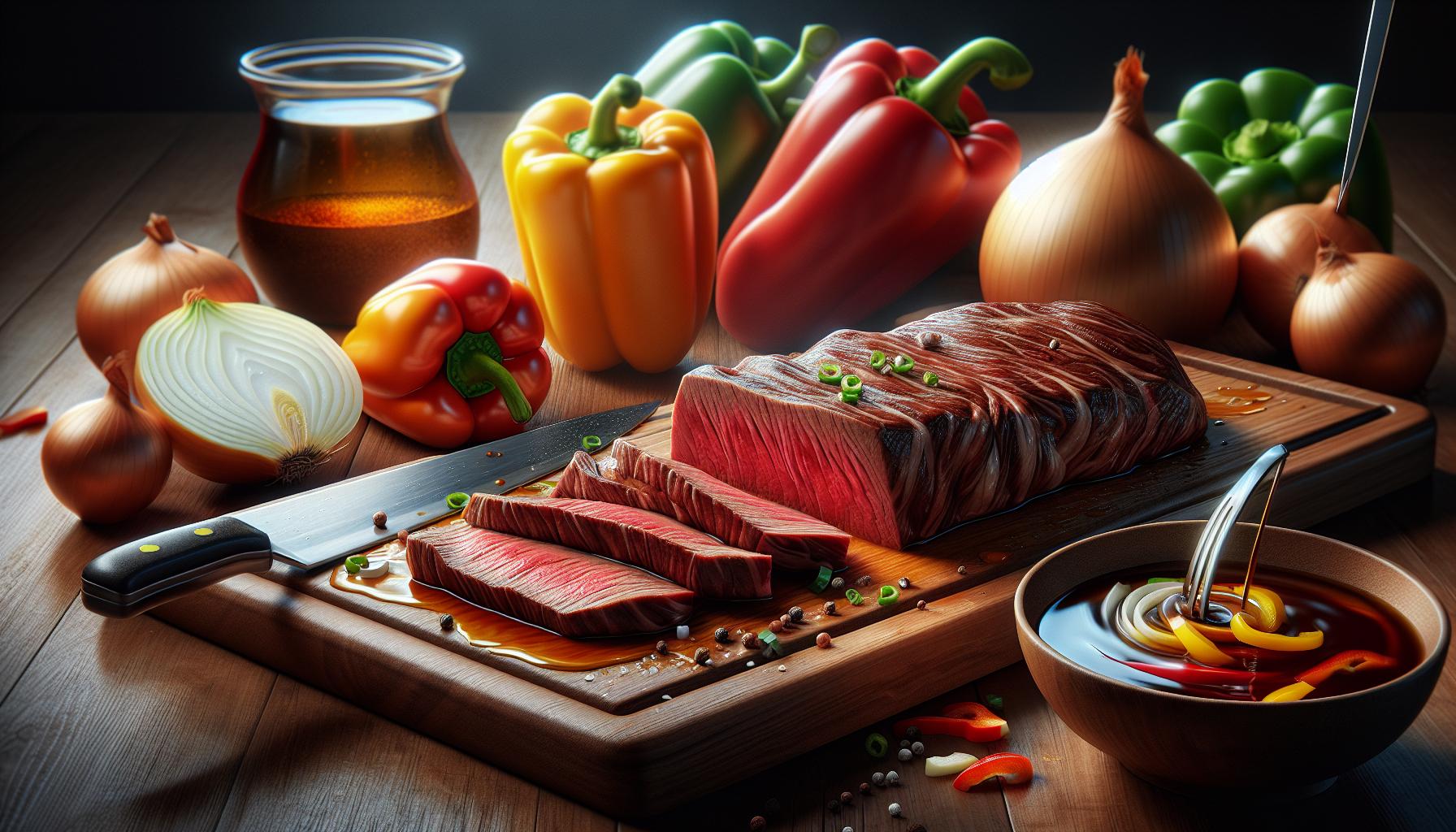
Craving authentic Hunan beef flavors at home? You’ve got it. Just follow these insider tips to elevate your dish to restaurant quality.
First, your choice of beef matters. Opt for flank steak as it’s tender and easy to slice thin. But if you can’t find it, sirloin will also do the job. Remember, an evenly thin cut beef will cook quicker and soak up more flavors.
Next, don’t skimp on the marinade. Authentic Hunan beef boasts strong, bold flavors. This is achieved by a good marinade. Your marinade ought to include soy sauce, white wine, and cornstarch. Why cornstarch? It keeps your beef tender and helps to thicken the sauce.
Don’t forget the importance of fresh veggies either. Fresh bell peppers and onions add a needed crunch. They’re also packed with vitamins to balance the protein from the beef. If you’re not a fan of bell peppers or onions, try broccoli, snow peas, or even carrots.
Spiciness is key in Hunan dishes. Adjust to your taste, but remember this dish is meant to be hot! Dried chili peppers or Szechuan peppercorn can add that fiery touch traditionally associated with Hunan cuisine.
let’s talk about the sauce. This is where the balance of flavors happens. A mix of soy sauce, vinegar, sugar, and a bit of cornstarch to thicken it- is all you need. The tanginess from the vinegar balances the sweetness of the sugar, while the soy sauce lends that umami punch.
Lastly, cook everything at a high temperature. You want the beef to sear quickly and veggies to remain crisp. This also helps the beef and veggies retain their individual flavors.
Experiment with flavors – cooking isn’t always about strict rules. You’ll develop the best Hunan beef by trying different flavor combinations and adjusting them to your taste.
Serving and Presentation Suggestions

Let’s kick things up a notch. Your Homemade Hunan Beef deserves a stage! Positioning it with the right accompaniments, not only intensifies the taste but also elevates the dining experience.
Picture this: A plate of steaming Hunan beef sitting atop a fluffy bed of jasmine rice. Intriguing, isn’t it? Pairing this dish with jasmine rice or steamed white rice enhances the flavors, adding a comforting and familiar note to the meal.
But, perhaps you’d like a smidgen more authenticity. In that case, consider Asian noodles as the base. The succulent beef with the sauces entwined with the noodles can amp up the eating pleasure.
Dress up the dish with some fresh scallions or cilantro sprinkled on top. These give a pop of color and a punch of flavor, making the dish irresistibly appealing.
A drizzle of sesame seeds or chili flakes can take the beef to the next level. They add a crunch or heat that can heighten the sensory enjoyment even more.
Have you thought about the nutritional value of the recipe? It’s not just a flavorful delight. While the calorie content can vary based on the cut of beef and the quantities you use, it typically breaks down into this:
| Nutritional element | Content per serving |
|---|---|
| Calories | 440 calories |
| Carbohydrates | 10g |
| Proteins | 26g |
| Fats | 18g |
| Vitamin B12 | 53% Daily Value |
Remember, the key to a great Hunan beef experience is largely about experimenting and catering to your own taste. Don’t be afraid to play around with the condiments and garnishes that I’ve suggested.
Variations and Customizations to Try
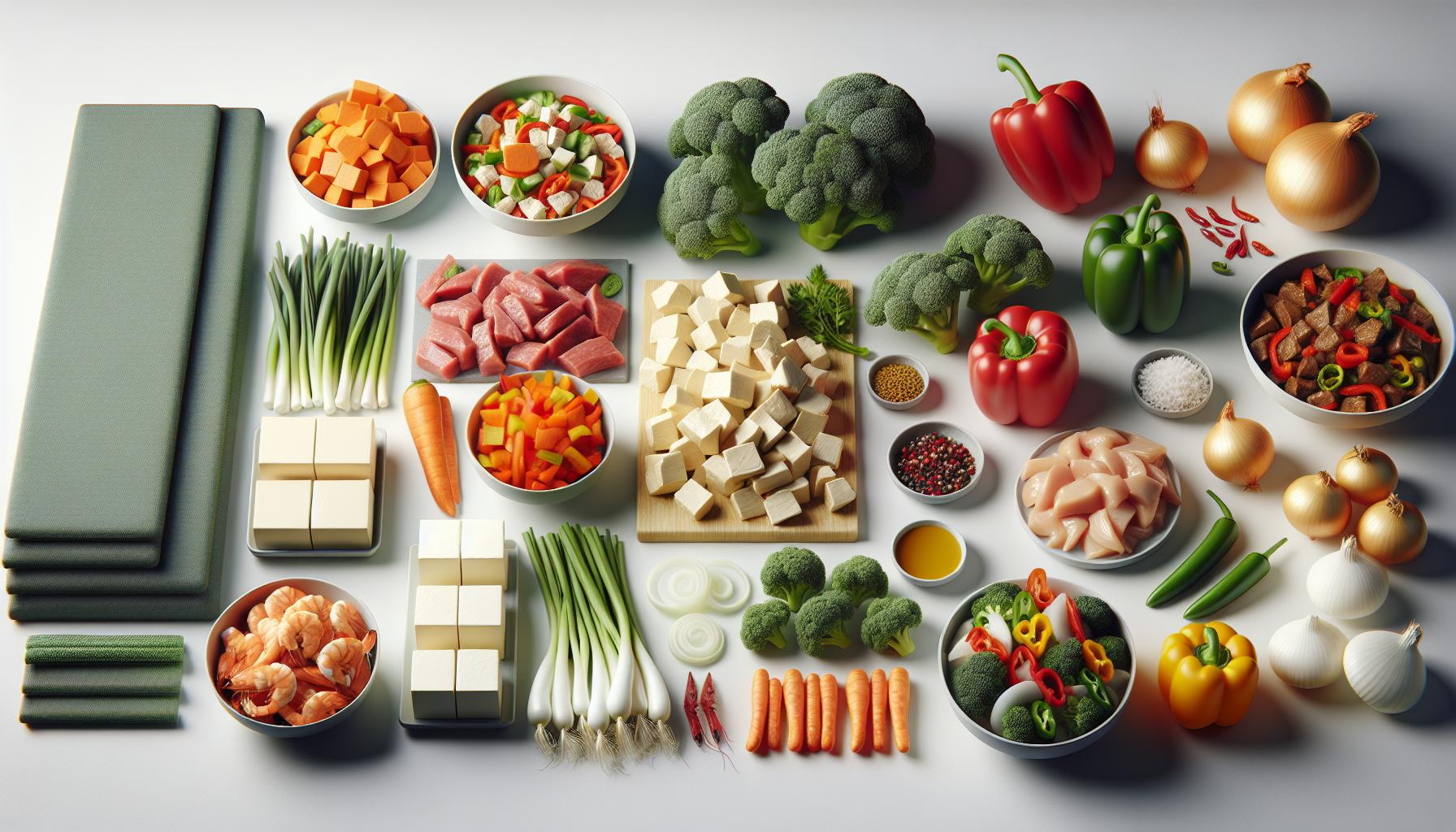
Having mastered the basic Homemade Hunan Beef recipe, you’re ready to put your own spin on it. It’s an incredibly versatile dish that can easily be customized to suit your taste or dietary needs.
Vegetarian/Vegan Version
If you’re going vegetarian or vegan, don’t sweat it. There are plenty of ways to tailor this dish to your needs. Try using tofu or tempeh as your meat substitute. Both are fantastic sources of protein. For the best flavor, marinate the tofu or tempeh in the same spices as you would the beef.
Experimenting with Proteins
Looking for more protein variety? Substitute the beef with skinless chicken thighs, pork loins, or plump shrimp. Each provides a unique taste and texture that adds its own charm to the dish.
Spice Levels
If your palette is craving more heat, consider ramping up the spice. Add extra chili flakes or even whole dried red chilies during the cooking process. Be cautious though! Hunan cuisine is known for its fiery flavors, and it’s easy to cross the line from spicy to scorching.
Vegetable Additions
Bored of bell peppers? Toss in some fresh green beans, shiitake mushrooms, or baby corn. Each adds a unique crunch and boosts the nutritional value of your Hunan beef.
Remember, it’s key to experiment and customize. Don’t shy away from mixing things up until you create the best Hunan beef tailored to your individual preferences. The sky is the limit, explore and have fun with it.
Conclusion
So there you have it! You’re now armed with all you need to whip up a delicious Homemade Hunan Beef dish that’s uniquely yours. Don’t be afraid to mix things up a bit. Swap out beef for tofu, tempeh, chicken, or shrimp. Crank up the heat or dial it down. Toss in a medley of veggies like green beans or shiitake mushrooms. The beauty of this recipe lies in its flexibility. It’s all about making it your own. So go ahead, get creative in the kitchen and make your next meal a memorable one. After all, isn’t that what cooking’s all about? Happy experimenting!
